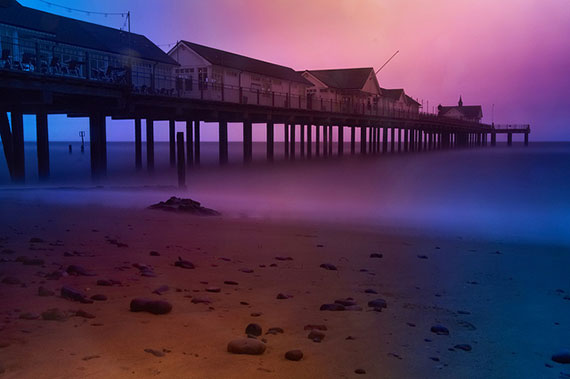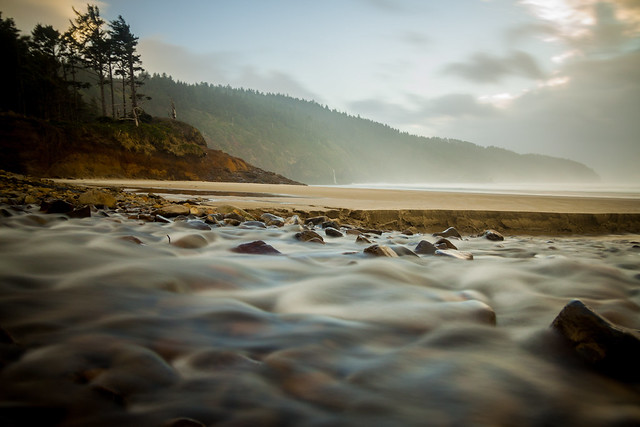Many lens filters in today’s digital society have been made redundant. Most cameras and/or post-processing tools now include features for correcting white balance, for softening, and for various special effects. But there are still some effects that simply cannot be reproduced without the use of filters. Here we give you an overview of the most essential filters that every photographer should learn to use.

Photo by Rob; ISO 200, f/16.0, 322-second exposure.
Using Lens Filters
A small filter may be applied to the lens to provide reinforcing or fun effects. Filters had their hay day when people where still photographing with film. Digital imaging had at that time not come that far, and we used different filters to get the desired effect instead.
For that reason, many associate the use of filters with a clear image manipulation. However the most common filters do not provide such drastic results. They are used simply to reinforce the individual effects, such as light phenomena.
Here are Some of the Most Common Lens Filters
Polarizing Filter
A polarizing filter is probably the most known and used of all filters, and not without reason. This filter works much like putting a pair of sunglasses in front of the lens. It eliminates reflections, glass, shiny surfaces and water, and thus enables you to photograph what is behind a window or under the water, rather than a surface full of reflections. Polarizing filters also contribute to greater contrast and more saturated colors, and they can make the sky darker, which is especially useful when photographing landscapes.

Photo by Tambako The Jaguar; f/5.6, 1/250-second exposure.
Polarizing filters work, however, only when you photograph your subject from an angle, not straight on. That is, if you stand right in front of a window and shoot, the filter may not be able to remove the reflections in the glass. Therefore, make sure you’re always shooting from an angle. There are two types of polarizers: linear and circular. Linear is used with older manual cameras, while the circular is used for cameras with auto focus.
UV Filter
A UV filter improves color reproduction and eliminates blur caused by ultraviolet radiation. Ultraviolet light is invisible to the eye and highly prevalent when shooting in hazy weather, mountainous regions, coastal areas and areas with very clear air. UV filters are colorless and do not require any extension of exposure time. It is recommended that UV filters be permanently mounted on the lens as a protective filter.
When you attach this filter on top of the lens glass, it is the actual filter that is exposed to any dust and scratches. It is much cheaper to replace a filter if you scratch or damage it, than to replace the entire lens.
When using a UV-filter, it is important to remember that the glass of the filter should have at least as good quality as the glass of the lens. Otherwise, the picture quality will be deteriorated.
ND (Neutral Density) Filter
A neutral density filter, makes it possible to shoot with slower shutter speeds or large apertures, even in very bright situations. This is because the amount of light emitted through the lens is reduced. This is useful if you, for example, want to photograph a waterfall in daylight, but still want the smooth effect of water in motion. ND filters are available in different strengths, depending on how much light you want to block out.

“Sunshine” captured by Luke Detwiler
Another option is a graduated ND filter. This filter goes from dark to clear, with either smooth or sharp transitions. This filter is used, for example, when the foreground and background require different exposure. An example is when you photograph something dark under a bright sky. With a graduated ND filter, you can correctly expose the dark portion of the image without the bright portion being overexposed.
They are also used to reduce the contrast of the image. At sunrise, you may need to dim the sunlight a bit to reveal details in other areas of the image. There are also graded alternatives with colors, which can be used for special effects. Orange or brownish versions can provide atmospheric skies in the pictures.
Do you use filters?
About the Author:
Morris Scjomin (dslrlensauctions) has been a professional photographer for over 10 years, practicing exclusively in the field of portraiture, still life, and documentary images. He has an affection and a passion for DSLR camera lenses.
Go to full article: Lens Filters: What Are They and When Do We Need Them
What are your thoughts on this article? Join the discussion on Facebook
PictureCorrect subscribers can also learn more today with our #1 bestseller: The Photography Tutorial eBook
The post Lens Filters: What Are They and When Do We Need Them appeared first on PictureCorrect.
from PictureCorrect https://ift.tt/3jX6RL8
via IFTTT






0 kommenttia:
Lähetä kommentti